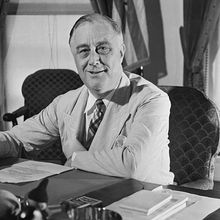Capitalism Will Survive
< < Go Back
Don’t despair. [The winner] may be a dismal choice. But the U.S. economy is resilient.
As Americans prepare to make what many see as a depressing choice between presidential candidates, they shouldn’t despair. Yes, Donald Trump and Hillary Clinton don’t sound like wise stewards of economic policy. And yes, we have some problems that need serious attention, such as a badly distorted credit market and an unworkable Affordable Care Act. But the American capitalist economy has become extremely powerful and can most likely withstand further abuse, however unwelcome.
It was not always thus. In the 1930s, a much smaller, heavily agrarian American economy was in danger of falling victim to statism. The “Great Depression” began in 1929 with a downturn in the business-credit cycle that precipitated a stock-market crash. The market was recovering in 1930 but the real economy didn’t rebound as it had after a similar crash in 1920.
New Deal historians called what happened a “crisis of capitalism.” In fact, capitalism was doing great in the 1920s. Henry Ford was cranking out Model Ts that almost anyone could afford. Housewives were buying labor-saving tools like electric vacuums and washing machines on the installment plan. Fat Sears and Montgomery Ward catalogs offered the bounty of capitalism to dwellers in even the remotest farm houses.
It was public policy that deepened an ordinary recession and prolonged it for a decade. The Depression was a demonstration of what happens when the government responds to a downturn with excessive interference with market forces.
The seeds of the Depression were planted with the Federal Farm Loan Act of 1916, in a two-year interval in which President Woodrow Wilson had a compliant Democratic Congress. The act set up 12 regional government banks to make preferential loans to farmers. Farmers had done well earlier, so much so that years later they would ask the government to support prices on a parity with the year 1912. But the 1916 government venture damaged country banks with unfair competition and encouraged farmers to overproduce. That lowered prices.
Had Congress stopped there the damage would have been limited. But lobbyists for industry and labor demanded protection as well. The final Smoot-Hawley bill doubled already-high tariffs on 20,000 dutiable items to an average of 50% of value.
Ignoring his own better instincts and a petition signed by more than 1,000 economists, Hoover signed Smoot-Hawley into law. The sharp drop-off in trade that resulted sent prices plummeting, worsening what was already a deflationary cycle caused by the loss of liquidity in the crash. Europeans were inhibited from selling goods in the U.S. to earn dollars to buy U.S. products and pay their war debts. The reduced flow of funds worsened deflation. Europe’s retaliation with tariff increases made matters worse. A global money shortage ensued.
U.S. exports nose-dived to $1.7 billion in 1933 from $5.2 billion in 1929, with farmers—big exporters even then—hit the hardest. Democrats swept the 1932 elections but instead of giving the country less market interference they gave it more.
The most egregious was the 1933 National Industrial Recovery Act, which required businesses to adopt 557 “codes” to prevent price cutting. These cartels violated the key principle that market competition is the guarantor of a vigorous, efficient economy.
Fortunately, the Supreme Court put it out of its misery in 1935, declaring it an unconstitutional extension of government power.
Despite Smoot-Hawley, the New Deal’s revolutionary farm production quotas, the NIRA and FDR’s attacks on capitalism, the business cycle turned upward in 1933. Unemployment fell from nearly a quarter of the labor force that year to 17% in 1936. But then the “second New Deal” Congress slapped a tax on “surplus” business profits, the equivalent of a tax on job-creating investment. The market crashed again in 1937 and took the economy with it.
In 1940 FDR, to his credit, realized that to rearm a militarily weak America he badly needed the capitalists he had spurned and often reviled. He made peace with them and they responded magnificently, especially after Japan’s December 1941 attack, quickly mobilizing their factories to perform amazing feats of weapons production.
That performance, plus the defeat and discrediting of fascists Hitler and Mussolini and the outset of the Cold War with ultra-statist Stalin gave Americans a new appreciation for market capitalism. Largely unfettered in the postwar era, privately owned corporations produced the technological marvels and high living standards we enjoy today.
The system is under threat again. But it is far stronger now than it was in the 1930s. History is not on the side of the statists.
Cheer up, if you can.
More From The Wall Street Journal (subscription required):




